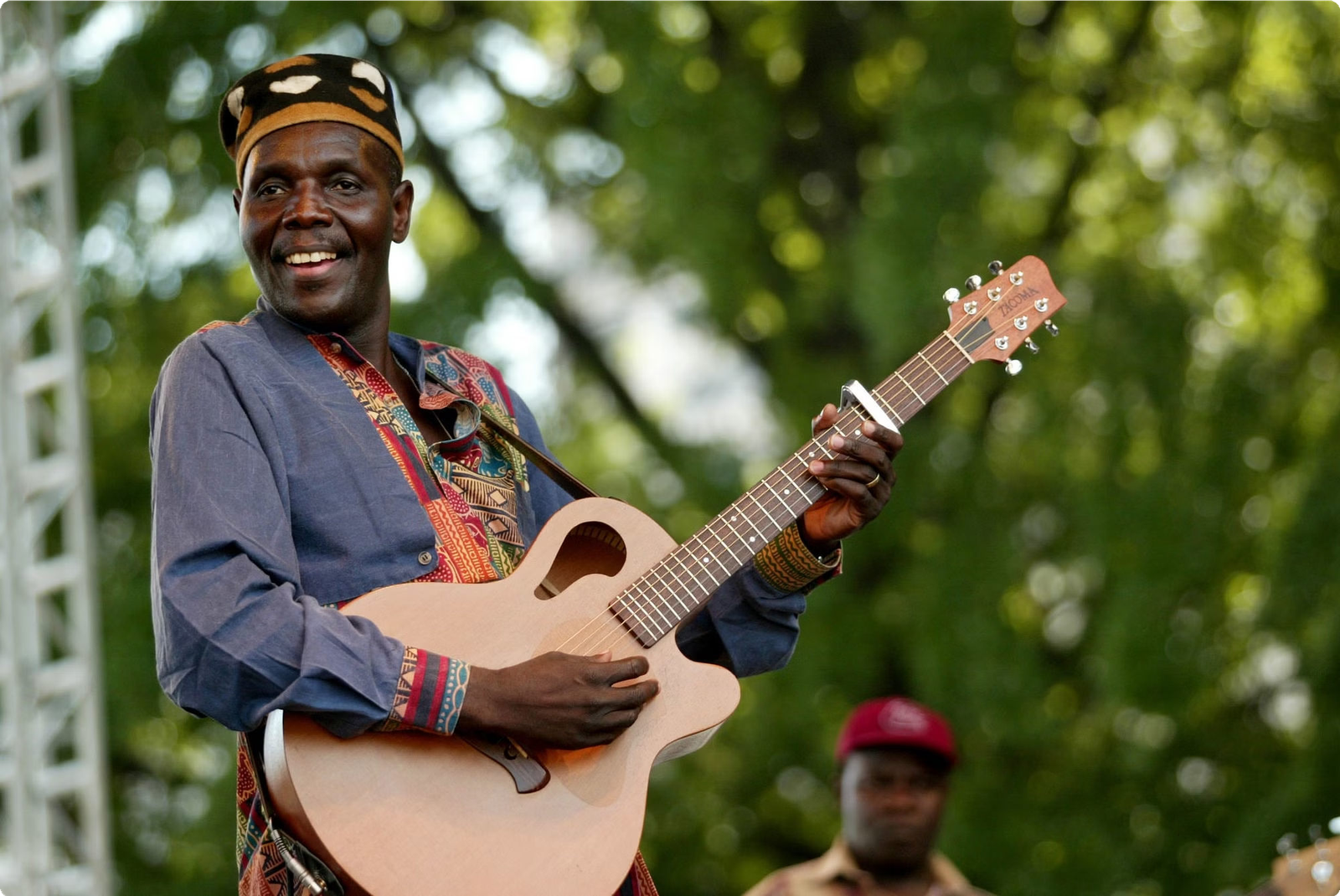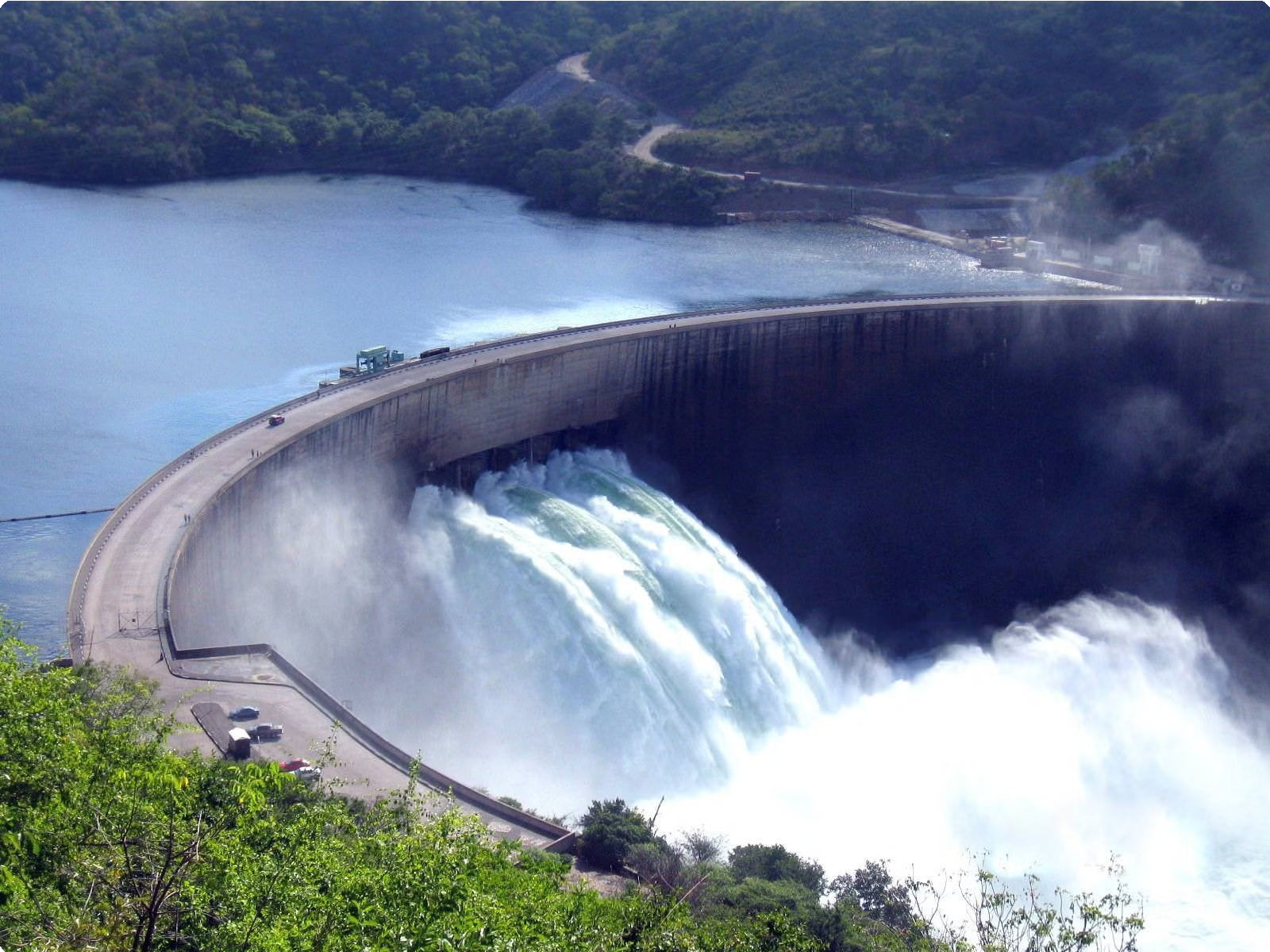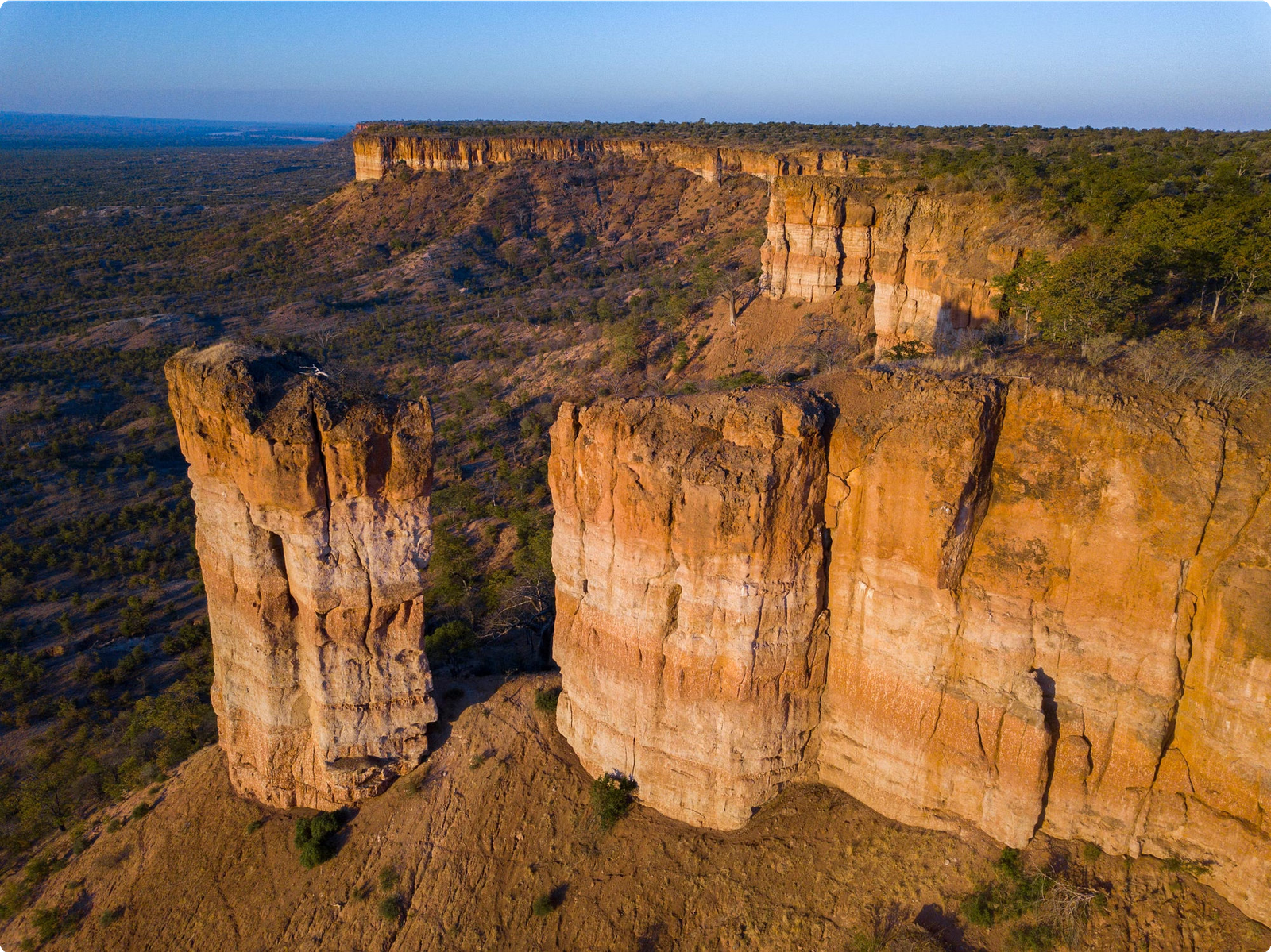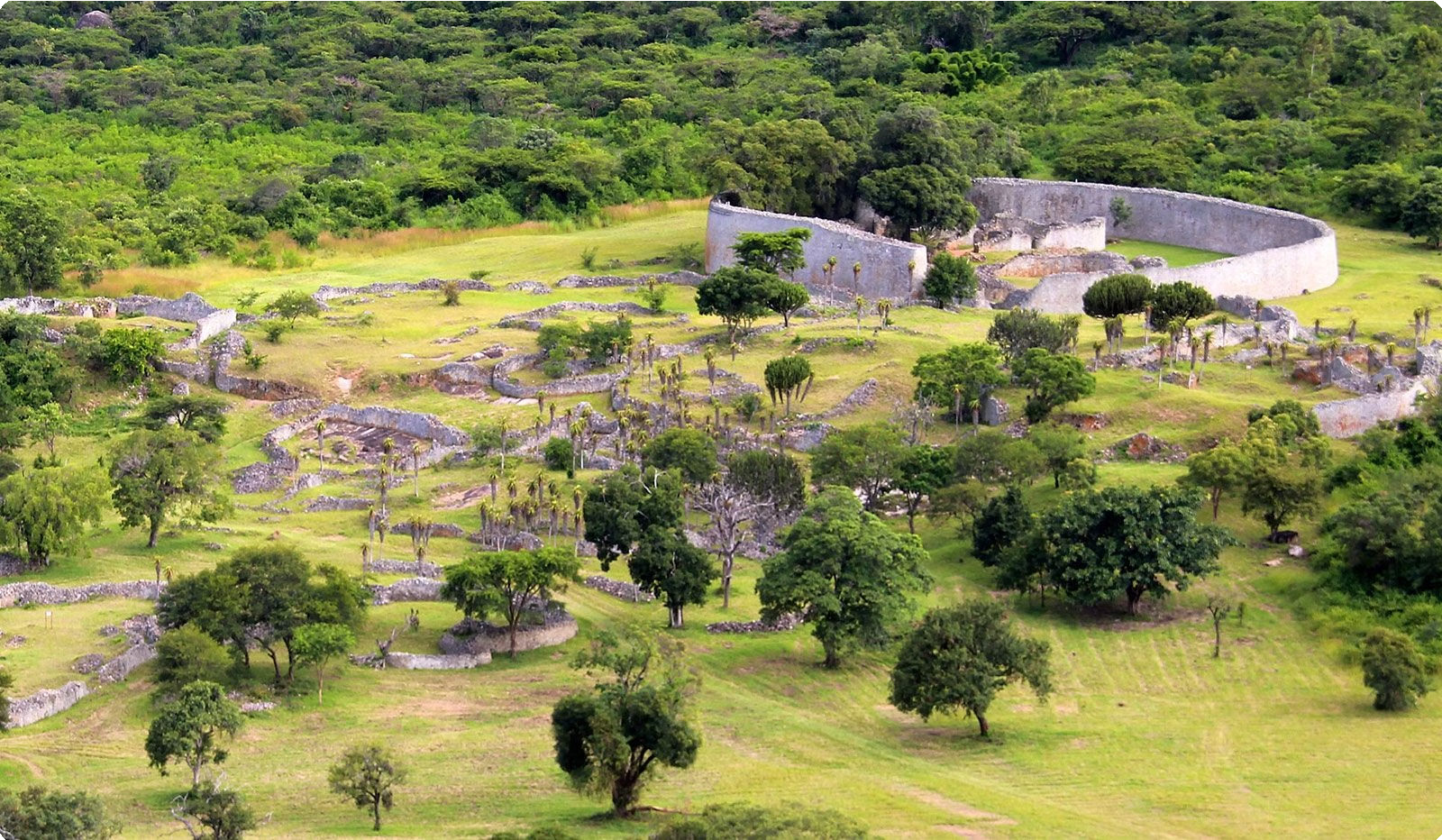Zimbabwe
Discover Zimbabwe
Zimbabwe is a landlocked country located in southern Africa, known for its rich history and diverse culture. The country is bordered by South Africa, Botswana, Zambia, and Mozambique. The capital city is Harare, and the official languages are English, Shona, and Sindebele.

Zimbabwe has a fascinating blend of traditions, from vibrant dance and music to delicious traditional cuisine. The country also boasts stunning landscapes, including iconic national parks such as Hwange and Matobo, making it a nature lover’s paradise.
Flag of Zimbabwe
The flag of Zimbabwe consists of seven horizontal stripes of green, yellow, red, and black with a white triangle containing a red five-pointed star and the Zimbabwe Bird. The green stripes represent agriculture and rural areas, while the yellow symbolizes the country’s mineral wealth. The red stands for the bloodshed during the liberation struggle, and the black represents the heritage and ethnicity of the indigenous people. The white triangle represents peace, and the Zimbabwe Bird is a national emblem representing the history and aspirations of the nation. The flag was adopted on April 18, 1980, at the country’s independence.

Map of Zimbabwe
Zimbabwe, a landlocked country located in southern Africa, boasts diverse landscapes, from savannas to woodlands to mountain ranges. The map of Zimbabwe showcases its topography, highlighting iconic landmarks such as Victoria Falls, Lake Kariba, and the capital city, Harare. The country’s unique geography is a source of natural beauty and provides travelers with a wide array of experiences to explore.

From the bustling urban centers to the serene national parks, the map of Zimbabwe invites visitors to discover the country’s rich history, stunning wildlife, and vibrant culture. Whether journeying through the ancient ruins of Great Zimbabwe or embarking on a safari in one of Zimbabwe’s renowned national parks, the map serves as a guide to the country’s multifaceted attractions and destinations.
Currency of Zimbabwe
Zimbabwean Dollar (ZWL)
The official currency of Zimbabwe is the Zimbabwean Dollar (ZWL). It was reintroduced in 2019, replacing the use of foreign currencies such as the US dollar and the South African rand. The currency symbol for the Zimbabwean Dollar is “$”, and it is denoted by the code “ZWL”.

Multi-Currency System
Although the Zimbabwean Dollar is the official currency, the country also operates on a multi-currency system, allowing transactions to be conducted in various foreign currencies such as the US dollar, the South African rand, and the Botswana pula. This system aims to stabilize the economy and provide flexibility for businesses and consumers.
Currency Exchange
Visitors to Zimbabwe can exchange their foreign currency for the local Zimbabwean Dollar at authorized banks and exchange bureaus. It’s essential for travelers to be aware of the current exchange rates and any regulations regarding currency exchange while visiting the country.
Economy of Zimbabwe
GDP and Major Industries: Zimbabwe’s economy is primarily based on agriculture, mining, and tourism. The country is known for its production of tobacco, maize, cotton, and sugarcane.
Additionally, Zimbabwe has significant mineral resources, including gold, platinum, and diamonds, which contribute to its export earnings.
Inflation and Currency: Zimbabwe has faced significant economic challenges, including hyperinflation in the past. The country’s official currency is the Zimbabwean Dollar, although other currencies such as the US Dollar and the South African Rand are also used in daily transactions.
Trade and Investment: Zimbabwe is part of regional trade agreements such as the Southern African Development Community (SADC) and has been working to attract foreign direct investment in sectors like agriculture, manufacturing, and infrastructure.
Culture of Zimbabwe
Traditional Attire: The traditional attire in Zimbabwe is vibrant and reflects the cultural diversity of the country. It includes colorful clothing adorned with intricate patterns and designs, often representing different ethnic groups.
Music and Dance: Music and dance are integral to Zimbabwean culture. The country is known for its traditional music, such as mbira music, and energetic dances like the Shona dance and the muchongoyo dance.
Art and Crafts: Zimbabwe boasts a rich tradition of art and crafts, including stone sculptures, wooden carvings, and intricate baskets, showcasing the artistic talent of the Zimbabwean people.
Cuisine: The traditional Zimbabwean cuisine is a fusion of flavors, influenced by various ethnic groups. Dishes like sadza (a maize-based staple), muriwo (leafy greens), and traditional meats are popular.
Traditional Dances in Zimbabwe
Mbira Music and Dance
Mbira music and dance are an integral part of Zimbabwe’s cultural heritage. The mesmerizing melodies of the mbira, a traditional instrument with metal keys plucked by the thumbs, accompany intricate dance movements. The rich history and spiritual significance of mbira music and dance make it a captivating experience for both locals and visitors.

Traditional Dance Attire
Zimbabwean traditional dances are not only defined by their movements but also by the vibrant and colorful attire worn by the performers. The attire plays a crucial role in reflecting the cultural identity and storytelling elements of the dances, adding a visual dimension to the performances.
Traditional food in Zimbabwe
Sadza and Nyama
Sadza, the staple food of Zimbabwe, is a thick porridge made from finely ground maize. It is often served with Nyama, which is a delicious meat stew. This hearty and comforting meal is a fundamental part of Zimbabwean cuisine, representing the cultural significance of communal dining and sharing.

Mopane Worms
Mopane worms are a popular traditional delicacy in Zimbabwe. These edible caterpillars are dried and can be enjoyed as a crunchy snack or added to stews for a unique flavor. Despite their appearance, Mopane worms are rich in protein and are considered a nutritious and sustainable food source.

Chimodho
Chimodho is a traditional Zimbabwean snack made from ground peanuts mixed with sugar and roasted to perfection. It is often sold by street vendors and is a favorite treat among locals and visitors alike. The sweet and nutty flavor makes it a delightful snack for any time of the day.

Famous Celebrities from Zimbabwe
Danai Gurira
Danai Gurira is a Zimbabwean-American actress and playwright. She is best known for her roles as Michonne on the popular TV show “The Walking Dead” and as Okoye in the Marvel Cinematic Universe films “Black Panther” and “Avengers: Infinity War”. Gurira is not only an accomplished actress, but she is also a prominent voice for social and humanitarian causes, using her platform to advocate for issues affecting African communities.

Tendai Mtawarira
Tendai “Beast” Mtawarira is a former Zimbabwean professional rugby player who gained international recognition for his outstanding career with the South African national rugby team, the Springboks. His powerful and skillful playing style earned him a place among the world’s top rugby players, and he became a beloved figure in the sport, particularly in South Africa, where he achieved great success on the international stage.

Oliver Mtukudzi
Oliver Mtukudzi, also known as “Tuku”, was a legendary Zimbabwean musician, songwriter, and guitarist. With a career spanning several decades, Mtukudzi’s music spoke to the hearts of people across the globe with its powerful messages of hope, love, and social commentary. He remains an influential figure in Zimbabwean music and is celebrated for his immense contribution to the music industry.

Best Cities to Visit in Zimbabwe
Harare: As the capital city of Zimbabwe, Harare offers a vibrant mix of modern city life and rich cultural heritage. Visitors can explore the National Gallery, witness a cricket match at Harare Sports Club, and enjoy delicious local cuisine at bustling markets.
Bulawayo: Known as the “City of Kings,” Bulawayo boasts beautiful colonial architecture, serene parks, and a thriving arts scene. Travelers can visit the Natural History Museum, admire the historic railway station, and take a day trip to Matobo National Park.
Mutare: Nestled in the eastern highlands, Mutare is a gateway to outdoor adventures. Visitors can hike through the Bvumba Mountains, explore the charming Christmas Pass, and visit the beautiful Vumba Botanical Gardens.
Gweru: Gweru offers a laid-back atmosphere and is home to the Antelope Game Park, where visitors can spot various wildlife species. The city also features the intriguing Gweru Museum and the iconic Kopje Hill.
Masvingo: With its close proximity to Great Zimbabwe National Monument, Masvingo is a must-visit city. Tourists can marvel at the ancient stone structures, go on a boat ride at Lake Mutirikwi, and learn about local history at the nearby museums.
Top Tourist Attractions in Zimbabwe
Victoria Falls: One of the Seven Natural Wonders of the World, Victoria Falls is a breathtaking spectacle of awe-inspiring beauty. The thundering water cascades over a mile-wide precipice, creating a mist that can be seen from miles away. Visitors can take in the view from various vantage points, including the iconic Knife Edge Bridge, and enjoy adrenaline-pumping activities like bungee jumping and white-water rafting.
Great Zimbabwe National Monument: This UNESCO World Heritage site is an ancient city built of stone without the use of mortar. The ruins testify to a sophisticated and powerful civilization that thrived in the region from the 11th to the 15th century. Exploring the site provides a fascinating insight into the history and architecture of early African societies.
Hwange National Park: As Zimbabwe’s largest national park, Hwange is home to an incredible diversity of wildlife, including elephants, lions, and cheetahs. Visitors can embark on game drives, nature walks, and guided tours to witness the fascinating behavior of these majestic creatures in their natural habitat.
Matobo National Park: Known for its unique landscape of balancing rock formations, Matobo National Park offers an extraordinary setting for exploration and relaxation. The park is a haven for rhinos and serves as a conservation area for these magnificent creatures. Visitors can also marvel at ancient rock art and engage in activities like hiking, birdwatching, and cultural experiences with local communities.
Mana Pools National Park: Designated as a UNESCO World Heritage site, Mana Pools is revered for its extraordinary beauty and exceptional wildlife. The park’s floodplains, lush forests, and the meandering Zambezi River create an enchanting backdrop for thrilling safari adventures, canoeing excursions, and encounters with hippos, crocodiles, and a myriad of bird species.
Victoria Falls
Victoria Falls, located on the Zambezi River at the border of Zambia and Zimbabwe, is one of the largest and most famous waterfalls in the world. It is also known as “Mosi-oa-Tunya,” which means “The Smoke That Thunders.” The sheer volume of water and the misty spray create a spectacular sight, which is often accompanied by a beautiful rainbow. The surrounding rainforest adds to the enchanting atmosphere, making it a UNESCO World Heritage Site. Visitors can experience the falls from various viewpoints, with activities including guided tours, helicopter flights, and bungee jumping.

The indigenous name “Mosi-oa-Tunya” captures the essence of Victoria Falls, as the thundering sound, mist, and rainbows create an awe-inspiring natural wonder. The falls play an important role in the local culture and have been a significant source of inspiration for artists and writers over the years, making it a must-visit destination for nature enthusiasts and adventure seekers.
Great Zimbabwe National Monument
The Great Zimbabwe National Monument is a remarkable architectural site located in the southeastern hills of Zimbabwe near Lake Mutirikwe. It is an ancient city built from granite and represents the largest collection of ruins in Africa south of the Sahara. The site is of significant historical and cultural
importance, showcasing the powerful civilization of the Shona people during the late Iron Age. The monument features impressive stone structures, including the Great Enclosure, the Hill Complex, and the Valley Ruins, all of which reflect the remarkable masonry and advanced engineering of the builders.
Visitors can explore the intricate passageways, towering walls, and enigmatic monoliths that embody the ingenuity of the ancient inhabitants.

The Great Zimbabwe National Monument is recognized as a UNESCO World Heritage Site, attracting visitors from around the world to marvel at its unique architecture, historical significance, and captivating landscapes. Its cultural importance and stunning views make it a must-visit destination for history enthusiasts, archaeology aficionados, and travelers seeking to immerse themselves in the rich heritage of Zimbabwe.
Hwange National Park
Hwange National Park is the largest natural reserve in Zimbabwe, covering an area of approximately 14,650 square kilometers. It is famous for its diverse wildlife, including a large population of elephants, as well as buffalo, giraffe, and numerous antelope species. The park is also home to predators such as lions, leopards, and cheetahs. Visitors to Hwange National Park can enjoy guided safaris, walking safaris, and night game drives, providing an opportunity to observe the incredible wildlife in their natural habitat.

The park’s varied landscapes, from open savannah to dense woodlands, offer stunning scenery and rich biodiversity. It is a haven for birdwatchers, with over 400 bird species recorded within the park. Hwange National Park provides a unique and immersive safari experience, making it a must-visit destination for wildlife enthusiasts and nature lovers.
Matobo National Park
Matobo National Park, located in southwestern Zimbabwe, is known for its stunning landscape characterized by a captivating combination of balancing rock formations, rugged terrain, and dense vegetation. The park is home to a rich diversity of wildlife, including black eagles, white rhinoceros, and other unique species.

The park holds great historical and cultural significance, with ancient rock art sites dating back thousands of years depicting the region’s spiritual and ceremonial practices. Visitors can immerse themselves in the rich history and spiritual heritage while exploring the park’s majestic granite hills and lush valleys.
Matobo National Park offers a range of activities, from guided walks and game drives to rock climbing and birdwatching, providing an unforgettable experience for nature enthusiasts and history buffs alike.
Mana Pools National Park
Mana Pools National Park is a UNESCO World Heritage Site located in northern Zimbabwe along the Zambezi River. The park is renowned for its unspoiled wilderness and diverse wildlife, including elephants, hippos, crocodiles, and a variety of bird species. Visitors can experience thrilling safaris, guided walking tours, and canoeing adventures along the river.

The landscape of Mana Pools is characterized by floodplains, dense forests, and the iconic Mana Pools, which are natural waterholes that attract numerous animals, making it an ideal location for stunning wildlife photography and observation. The park offers a unique opportunity for close encounters with wildlife in their natural habitat, creating unforgettable experiences for nature enthusiasts and photographers.
Kariba Dam
Kariba Dam, located on the border between Zimbabwe and Zambia, is one of the largest man-made lakes in the world. The dam was built to harness the power of the Zambezi River and has become a popular tourist destination due to its impressive size and scenic surroundings.

Visitors can take boat cruises or fishing trips on Lake Kariba, while also marveling at the wildlife that surrounds the area. The sunset views over the dam and the lake are truly breathtaking, making it a favorite spot for nature enthusiasts and photographers.
Lake Chivero Recreational Park
Lake Chivero Recreational Park, located just 40 kilometers from Harare, is a serene and picturesque park offering a wide range of activities for nature enthusiasts. The park surrounds the Lake Chivero reservoir and is home to diverse wildlife, including hippos, crocodiles, zebras, and a variety of bird species.
Visitors can enjoy boat cruises, fishing, and bird-watching, offering a peaceful retreat from the hustle and bustle of the city. The scenic views and tranquil atmosphere make it a popular spot for picnics and relaxation. The park also has designated camping sites for those looking to immerse themselves in nature and enjoy the stunning sunsets over the lake.

Gonarezhou National Park
Gonarezhou National Park, located in southeastern Zimbabwe, is renowned for its stunning landscapes and rich biodiversity. The name “Gonarezhou” translates to “Place of Elephants,” highlighting the park’s significance as a haven for these majestic creatures. The park is home to an array of wildlife, including big game such as lions, leopards, and buffalo, as well as over 100 species of mammals and 400 species of birds.
The scenic vistas of Gonarezhou feature rugged terrain, with sandstone cliffs, gorges, and the iconic Chilojo Cliffs overlooking the scenic Runde River. The park also boasts diverse ecosystems, from riverine woodlands to mopane forests, providing a habitat for a wide variety of flora and fauna.

Visitors to Gonarezhou can experience thrilling safaris, enjoy breathtaking sunsets over the wilderness, and explore the ancient rock formations and cave paintings that offer insights into the region’s rich history and cultural significance.
Chimanimani National Park
Located in the eastern part of Zimbabwe, Chimanimani National Park is a stunning area known for its diverse landscapes and unique rock formations. The park encompasses pristine wilderness with lush forests, deep gorges, and cascading waterfalls, offering breathtaking views and excellent opportunities for hiking and nature exploration.

The park is home to a wide variety of flora and fauna, including rare orchids, colorful bird species, and small mammals. Visitors can enjoy guided walks or challenging hikes through the picturesque landscapes, allowing them to experience the natural beauty and tranquility of this extraordinary park.
Chimanimani National Park is a paradise for outdoor enthusiasts and nature lovers, providing an unforgettable experience amidst the captivating scenery of Zimbabwe’s eastern highlands.
Harare, the Capital City of Zimbabwe
Harare, the capital and largest city of Zimbabwe, is a vibrant and diverse metropolis known for its modern architecture and wide streets. The city offers a compelling mix of contemporary culture and traditional African roots, making it a fascinating destination for travelers.
Visitors to Harare can explore its numerous museums, art galleries, and botanical gardens, showcasing the country’s rich history and natural beauty. The bustling markets and lively nightlife provide a glimpse into the local way of life, while the abundance of green spaces and parks offer moments of tranquility within the urban landscape.

Harare is also a hub for political and economic activities, reflecting the dynamic nature of Zimbabwe’s capital. From its iconic skyline to its friendly and welcoming residents, Harare is a city of contrasts, blending old-world charm with a forward-looking outlook.
Bulawayo, the Second-Largest City in Zimbabwe
Bulawayo is the second-largest city in Zimbabwe and holds a significant place in the country’s history and culture. Known for its wide streets and attractive colonial architecture, the city has a rich historical heritage. It serves as an important industrial center, with a focus on textiles, vehicles, and railway industries.

The city is also famous for its vibrant arts scene, with numerous museums, galleries, and theaters showcasing the creativity and talent of local artists. Furthermore, Bulawayo is renowned for its warm and welcoming atmosphere, making it a popular destination for travelers looking to explore Zimbabwe’s cultural heritage.
Mutare, a City in Eastern Zimbabwe
Mutare, also known as Umtali, is the fourth largest city in Zimbabwe and is located in the eastern highlands of the country. The city is known for its picturesque landscapes, including the stunning Penhalonga Valley and the Bvumba Mountains. With its charming colonial architecture and vibrant markets, Mutare offers a unique blend of history and modernity.

Visitors to Mutare can explore the historic Utopia House, take a scenic drive to the nearby Honde Valley, or enjoy a leisurely stroll through the colorful local markets. The city is also a gateway to the famous Chimanimani National Park, renowned for its diverse flora and fauna, making Mutare an ideal starting point for nature enthusiasts.
Gweru, a City in Central Zimbabwe
Gweru is a vibrant city located in the central region of Zimbabwe. It serves as the capital of the Midlands Province and is known for its rich history and cultural diversity. The city is home to various educational institutions, including Midlands State University, which contributes to its youthful and dynamic atmosphere.

Visitors to Gweru can explore the scenic Antelope Game Park, renowned for its wildlife and natural beauty. Additionally, the iconic Gweru Railway Station, built in the early 1900s, stands as a testament to the city’s historical significance in the development of Zimbabwe’s railway system.
With a welcoming community and a range of attractions, Gweru offers a unique blend of urban amenities and natural attractions, making it a compelling destination for travelers seeking an authentic Zimbabwean experience.
Masvingo, a city in southeastern Zimbabwe
Masvingo, located in southeastern Zimbabwe, is a city steeped in history and culture. It is home to the iconic Great Zimbabwe National Monument, a UNESCO World Heritage site that showcases the ancient ruins of the Kingdom of Great Zimbabwe. Visitors can explore the fascinating architecture and artifacts that offer insights into the region’s rich past.

Besides its historical significance, Masvingo also boasts stunning natural landscapes and wildlife reserves. Lake Mutirikwi, the largest inland water body in Zimbabwe, offers excellent opportunities for fishing, boating, and birdwatching. The city’s vibrant markets, traditional craft workshops, and warm hospitality make it a must-visit destination for those seeking an authentic Zimbabwean experience.
Contact Information for Travel to Zimbabwe
If you’re planning a trip to Zimbabwe, it’s essential to have access to the right contact information to ensure a smooth and enjoyable visit. The official tourism board, Visit Zimbabwe, provides comprehensive information for visitors, including contact details for accommodations, travel agencies, and tour guides.
You can reach out to them for assistance with travel planning, visa inquiries, and recommendations for must-visit destinations within the country.
Additionally, you may want to contact the Zimbabwe Tourism Authority for valuable insights and guidance on exploring the country’s diverse attractions, from wildlife reserves to historical sites. For specific travel-related inquiries, such as transportation options, booking safari experiences, or obtaining permits for national parks, reaching out to local travel agencies and tour operators can be incredibly helpful.
When it comes to planning your trip, it’s recommended to stay informed about current travel advisories, entry requirements, and health and safety guidelines. The Ministry of Foreign Affairs and International
Trade of Zimbabwe can provide up-to-date information on visa applications, embassy contacts, and travel alerts for foreign visitors.